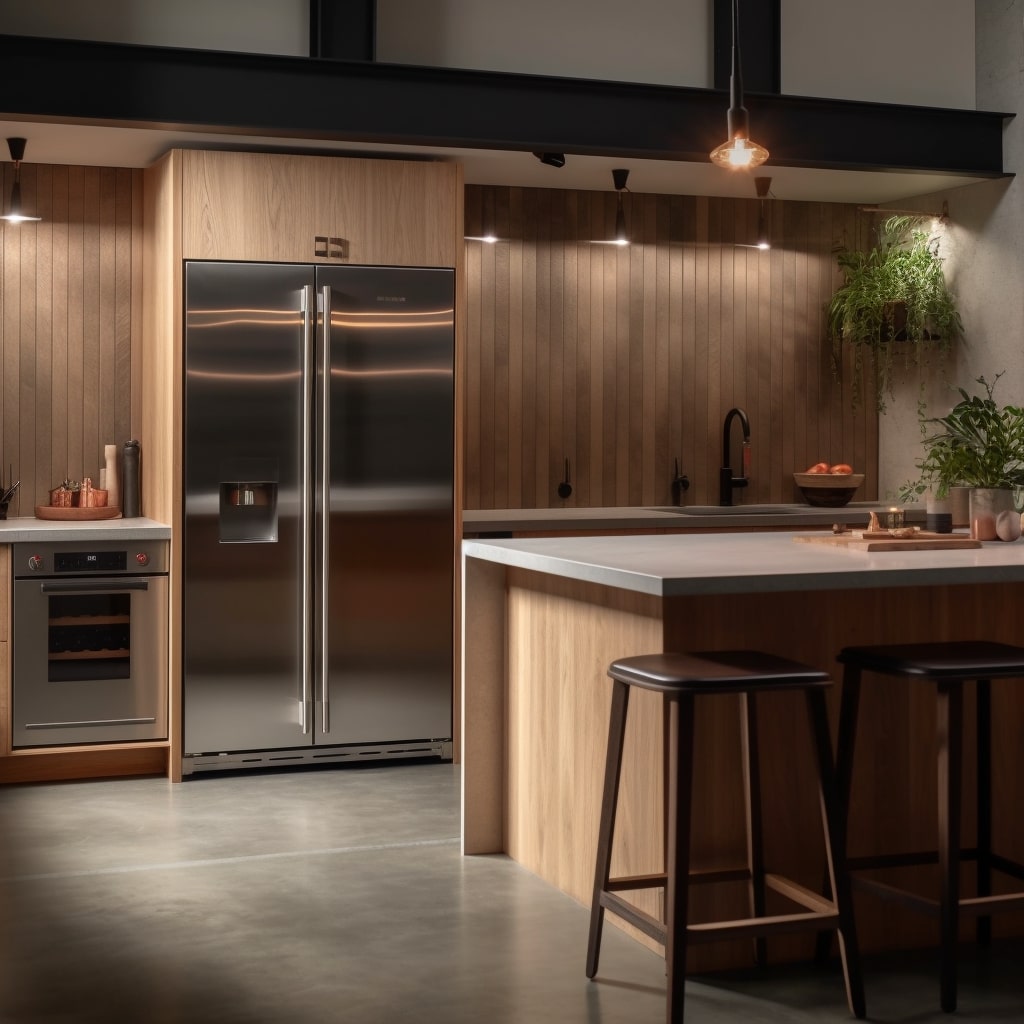Dining out with toddlers can be a challenging experience for parents. Toddlers are known to have limited attention spans and often struggle to sit still during meal times. In addition, they may become easily agitated or overwhelmed by the unfamiliar surroundings of a restaurant.
As child development experts, we understand that meltdowns while dining out is not uncommon among young children. However, there are several strategies that parents can adopt to minimize the likelihood of such occurrences.
Firstly, parents need to plan when choosing a restaurant. Parents should consider selecting restaurants that cater specifically to families with young children. Such establishments often offer amenities like high chairs and booster seats, as well as kid-friendly menus and play areas.
Additionally, parents should try to schedule meals at times when their toddler is likely to be well-rested and in good spirits. By being proactive in their approach towards dining out with toddlers, parents can create an atmosphere that is conducive to positive behavior and enjoyable meal experiences for all involved parties.
Understanding Toddler Behavior During Meal Times
The dining experience can be quite challenging when it comes to toddlers. Toddlers are in a unique stage of development where their emotions and behaviors are still unpredictable, which makes them prone to meltdowns during meal times.
Parents or caregivers need to understand the common triggers that could lead to tantrums and misbehavior. Common triggers such as hunger, boredom, fatigue, and overstimulation can easily affect a toddler’s behavior while dining out. When hungry or tired, they become irritable and more susceptible to negative behavior. On the other hand, an over-stimulated child may feel overwhelmed by the environment, leading them to act out.
Positive reinforcement plays a significant role in shaping toddler behavior during mealtimes. Praising good table manners and a positive attitude towards food encourages children to continue displaying these behaviors. Parents should also offer healthy food choices regularly and avoid using dessert or sweets as rewards for eating well-behaved at meals.
By creating a safe and nurturing atmosphere around meals, parents enable their children to develop better habits regarding nutrition and social expectations around eating without undue duress or coercion from adults.
Planning Ahead: Choosing The Right Restaurant
When selecting a restaurant for dining out with toddlers, it is important to consider the location. Restaurants that are close to home or familiar to the family are often a better choice than those that are far away or unknown.
Additionally, the menu options should be appropriate for toddlers, such as providing smaller portions or offering healthy options. Establishing a routine of familiar foods for toddlers can help reduce the likelihood of meltdowns during meals.
Location
When it comes to dining out with toddlers, choosing kid-friendly restaurants is essential. A family restaurant that caters to children can be a great choice as they often have high chairs or booster seats readily available and provide child-friendly menus. Additionally, some restaurants offer entertainment options for kids such as toys, games, or coloring books which can help keep them occupied while waiting for the food.
Finding quiet dining spots can also be crucial when planning for a meal with toddlers. Children are easily stimulated by their surroundings and may become overwhelmed in loud or crowded environments.
An ideal location would be one where there is enough space between tables to avoid any accidental bumping and jostling of other diners while still maintaining an enjoyable atmosphere. It’s important to consider the acoustics of the restaurant; if possible, choose a quieter area away from any music or noise that could potentially disturb your toddler.
In conclusion, selecting the right location is key to avoiding meltdowns while dining out with toddlers. By choosing kid-friendly restaurants and finding quiet dining spots, parents can set themselves up for success during mealtimes outside of the home.
Remembering these tips can make eating out a more pleasant experience for everyone involved!
Menu Options
Another factor to consider when planning for a meal with toddlers is the menu options available at the restaurant.
To keep children engaged and interested in their food, it’s important to choose restaurants that offer kid-friendly dishes.
Some examples of these might include macaroni and cheese, chicken tenders, or pizza.
However, it’s equally important to ensure that there are healthy options on the menu as well.
Many parents want their children to eat nutritious meals even when dining out, so choosing a restaurant that offers salads or grilled meats can be helpful in this regard.
When perusing the menu, it may also be beneficial to look for items that are easy for young children to eat independently.
Finger foods like carrots sticks or apple slices can be great choices for small hands.
By considering both taste preferences and nutritional value, parents can help make mealtimes outside of the home more enjoyable and healthful experiences for everyone involved.
Timing Is Everything: Scheduling Meals For Success
Timing is a critical element in ensuring that dining out with toddlers does not result in meltdowns. The timing of meals can affect the behavior and mood of young children during mealtimes. For parents who want to avoid tantrums while eating out, it’s essential to schedule meals at times when their little ones are well-rested and fed.
One strategy for avoiding meltdowns while dining out with toddlers is by having snacks available throughout the day. Snacks provide a convenient way to keep kids fueled without overloading them with sugar or carbs. Parents should make sure they have healthy snack options readily available, such as fruits, vegetables, cheese sticks, or yogurt tubes. This will help prevent hunger pangs from turning into full-blown temper tantrums.
Navigating naptime can also be challenging when dining out with toddlers. Parents must consider their child’s sleep schedule before making reservations at restaurants. If dinner falls within your toddler’s usual nap time, try pushing back your reservation or opting for an earlier mealtime.
Alternatively, if your child needs a nap before dinner, plan for some outdoor activities or sightseeing beforehand so that they can get tired enough to take a quick snooze in the stroller while you enjoy a peaceful meal.
In summary, scheduling meals strategically is crucial when dining out with toddlers. Having snacks ready and planning around naps will go a long way toward preventing meltdowns during meal times. By considering these factors ahead of time, parents can ensure that everyone has an enjoyable experience while eating out together as a family.
Bringing The Right Supplies For Your Toddler
Timing is crucial when it comes to dining out with toddlers. However, even if you have scheduled the meal perfectly, things can still go awry without the proper supplies.
As a child development expert, I highly recommend bringing along toddler mealtime essentials and packing for dining-out success.
When preparing for a meal outside of the home, make sure to pack enough food for your little one. Keep in mind that toddlers tend to get bored quickly with what they’re eating, so bring a variety of snacks or small meals. Also, don’t forget utensils such as spoons and forks. Some restaurants may not offer them readily available.
Aside from food, other essential items include bibs, wet wipes, and hand sanitizer. Toddlers tend to be messy eaters and accidents happen all too often during mealtimes. Bringing these necessary items will help prevent unnecessary stress while dining out.
In summary, avoiding meltdowns during restaurant outings requires more than just scheduling meals at appropriate times. Remembering to bring toddler mealtime essentials and packing for dining out success makes all the difference in creating an enjoyable experience for parents and children alike.
Setting Expectations And Boundaries
To avoid meltdowns while dining out with toddlers, it is essential to set clear expectations and boundaries. Communicating needs is an integral part of this process.
Parents should explain what behavior they expect from their children before going out for a meal. This can include sitting at the table, using utensils appropriately, chewing with their mouth closed, and avoiding loud noises.
Handling disruptions is another crucial aspect of setting boundaries. It’s important to address disruptive behavior immediately rather than waiting until it escalates into a meltdown.
For example, if a child starts throwing food or utensils, parents should calmly intervene and explain that this behavior is not acceptable. They could also offer alternative activities like coloring or reading books to redirect their attention.
Consistency is key when setting expectations and boundaries for young children. If rules are enforced consistently each time you dine out, your toddler will eventually learn how to behave in public settings without melting down.
Remember that toddlers thrive on routine and predictability; therefore, maintaining consistency in your approach will help them feel secure and confident in navigating new experiences such as eating out at restaurants.
Engaging Your Toddler In The Dining Experience
As parents, we know that tantrums are inevitable with toddlers. However, dining out with them does not have to be a nightmare. Setting expectations and boundaries in the previous section is just one way to avoid meltdowns while eating out.
Now, let’s explore another crucial aspect of toddler-friendly dining: engaging your child in the experience. Just like adults, children enjoy being part of something special – even if it’s just going out for a meal. Hence, it’s imperative to make sure they feel included during this time.
A metaphor that comes to mind when thinking about engaging toddlers at restaurants is playing hide-and-seek. When you play hide-and-seek with your little ones, everyone has fun because both parties are actively involved in the game. The same goes for enjoying meals together; involving kids in what’s happening around the table keeps them interested and occupied.
One way to engage your toddler during mealtimes is by offering interactive dining activities such as coloring books or simple games that can be played on paper placemats. Additionally, choosing establishments that offer kid-friendly menu options will give children more choices and control over their food selection. Allowing them some autonomy enables them to feel empowered and less overwhelmed by unfamiliar surroundings.
In summary, keeping toddlers entertained during restaurant visits requires effort from parents or caregivers but can help prevent fussy behavior before it starts. Offering interactive activities and selecting eateries with age-appropriate menus shows your child an enjoyable experience that extends beyond simply consuming food with family members or friends present. By doing so, you’ll encourage positive feelings towards dining out as well as create memories worth cherishing!
Managing Meltdowns: Tips And Tricks
Meltdowns are a common occurrence in toddlers, and they can happen anywhere, including in restaurants. As a child development expert, it is important to have strategies in place for managing meltdowns when dining out with toddlers.
One such strategy is the use of distraction techniques. Distraction techniques involve redirecting your toddler’s attention away from the trigger that caused their meltdown. For example, you could bring along some small toys or books for them to play with while waiting for food to arrive. Alternatively, you could engage them in conversation about something they find interesting or ask them questions about their day.
Calming strategies are another effective tool for managing meltdowns while dining out with toddlers. These strategies aim to help toddlers regulate their emotions and calm down after becoming upset. Some examples of calming strategies include deep breathing exercises, counting backward from 10, or holding onto a comforting object like a stuffed animal.
In summary, managing meltdowns while dining out with toddlers requires both distraction techniques and calming strategies. With these tools on hand and using them as needed, parents can help prevent meltdowns from escalating into full-blown tantrums.
Remember to remain patient and understanding throughout the process, as this will ultimately make for a more enjoyable experience for everyone involved.
Celebrating Success: Rewarding Positive Behavior
To further encourage positive behavior in toddlers when dining out, creating incentives can also be helpful. Rewards do not necessarily have to be material things like toys or candy but could also include verbal praise and attention.
For instance, parents can give their children a high-five or a hug after they exhibit good table manners during the meal. This shows that their efforts are being noticed and appreciated.
Consistency in rewards is crucial as well. It is essential to establish clear guidelines for what behaviors will earn rewards and stick with them consistently.
Parents should avoid giving mixed signals by rewarding one behavior one time and then punishing it another time. This inconsistency sends confusing messages to toddlers, making it challenging for them to understand the expectations set forth.
In summary, celebrating success through positive reinforcement is an effective way of promoting desirable behaviors in toddlers while dining out. Creating incentives such as verbal praise and attention motivates for children to behave appropriately at the restaurant.
Consistency in rewards is critical in reinforcing these behaviors since it helps reinforce the connection between actions and outcomes consistently over time.
Conclusion
Understanding toddler behavior during meal times is crucial to avoid meltdowns when dining out.
Planning by choosing the right restaurant and scheduling meals at appropriate times can also contribute to a successful experience.
Bringing along supplies such as snacks, toys, and utensils specific to your child’s needs can help with distractions and keep them occupied.
Setting expectations and boundaries beforehand can prevent any misunderstandings or surprises for your toddler.
Engaging your child in the dining experience by encouraging social interaction and participation will create positive associations with eating out.
However, even with careful planning, toddlers may still have meltdowns.
Managing these situations calmly and effectively through distraction techniques or taking breaks can be helpful.
Celebrating success by rewarding positive behavior reinforces good habits for future outings.
Overall, understanding toddler behavior during meal times, planning, bringing necessary supplies, setting expectations and boundaries, engaging in the dining experience, managing meltdowns appropriately, and celebrating successes are key factors for parents to consider when dining out with their little ones.
While it may not always be easy navigating through tantrums or picky eaters while trying to enjoy a meal outside of the home, following these steps can make the experience more enjoyable for everyone involved.







